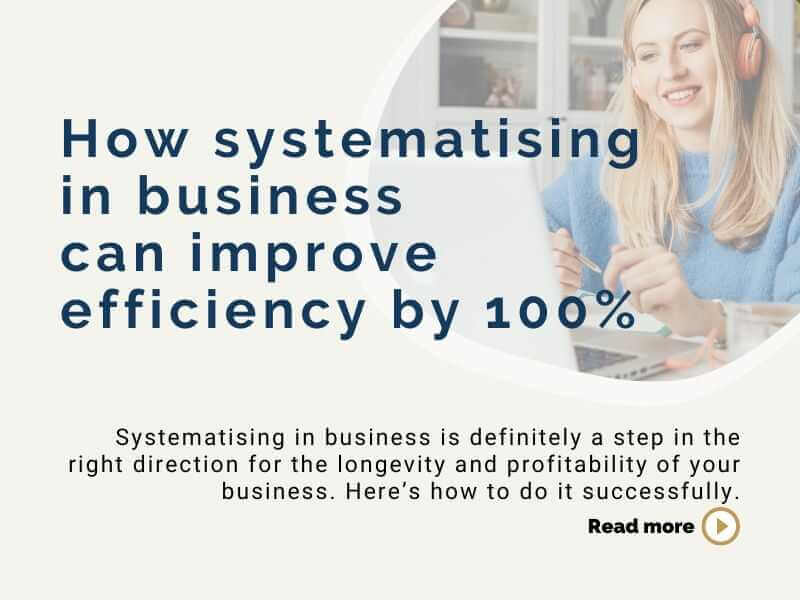So you are ready to systematise your business … congratulations! That is definitely a step in the right direction for the longevity and profitability of your successful business.
But what is systemising exactly?
In this blog, I’ll share that with you and how it can help your business grow.
What is systematising in business?
According to BeSlick, “Systemising your business essentially involves defining how your business systems should run, as a collection of processes or SOPs (standard operating procedures).
Your standard operating procedures make it easy for your business to run, and your employees to do the tasks and work. Without processes and SOPS, you’ll find your business is inefficient and you will constantly have problems that affect your productivity and profitability.
I wrote a blog recently on streamlining your business, which you may find helpful.
What is a systematised process?
Systematisation, in short, means following a repeatable framework or process when completing tasks. Using a checklist to complete a workflow, for instance, would be one example of systematisation. (Source: Digital Adoption).
Why is systematising your business important?
A systematic approach to managing and organising your work activities simply allows you to become more efficient and effective in your business, while also adapting to change more efficiently too.
It is a great way to involve your team on all levels of your business, so they can help you document and implement the systems needed to do their tasks.
Where do you start?
Probably the most common frequently asked question for business owners when it comes to systematising in business … Where do I start?
Great question! Here’s what to do first.
- Identify the key processes that are critical to your operation and directly impact your clients. Remember more clients equal more sales and business growth.
- Analyse your current processes to understand how they work. Then identify areas for improvement.
- Develop SOPs for each key process. This should clearly define the steps and resources needed to do the job.
- Use automation to automate the task and reduce manual handling and human errors.
- Train your team members and provide them with sufficient training to your team on any new SOPs so that they understand their new roles and responsibilities.
- Monitor and track the progress to ensure the systemisation is effective and also to identify the areas that need improvement for efficiency in the future.
Let’s make your business even more successful this year
If you are ready to systematise your business for growth and success this year, you’ll need an OBM to help you.
My superpower is systems to save your sanity and with 20+ years’ experience as an Online Business Manager (OBM) and VA across all sectors of business, I’m on hand to help you systematise your business to increase efficiency, productivity and profitability.
Book an initial chat to see if we are the right fit and learn how I can help you streamline your business processes.
Meanwhile, if you’re not at that stage yet, pop me in your back pocket and subscribe to my monthly newsletter where I share the latest news and workshops. You can sign up here.





